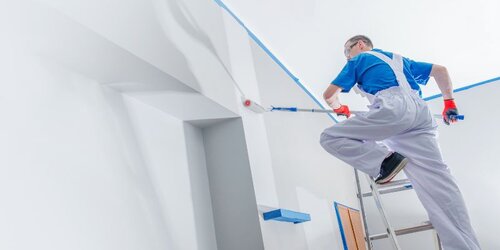Watercolor house painting is a captivating art form that has a unique charm all its own. With its delicate strokes and vibrant hues, it captures the essence of homes and landscapes in a way no other medium can. In this comprehensive guide, we’ll delve into the world of watercolor house painting, exploring the tools, techniques, and secrets that make it so enchanting. So, grab your brushes and join me on this artistic journey.
Getting Started with Watercolor House Painting
To embark on this artistic adventure, you’ll need a few essentials. Watercolors, brushes, paper – these are your trusty companions. But remember, the quality of your materials matters. Investing in high-quality supplies ensures that your watercolor house painting will stand out with its vivid colors and lasting beauty. Also, before diving in, consider your workspace. Ensure it’s well-ventilated and equipped with the necessary safety measures, like proper storage for your paints and brushes.
Finding Inspiration
Inspiration is the heart and soul of any artistic endeavor, and watercolor house painting is no exception. Seek inspiration in the world around you. Houses, cottages, urban scenes, or quaint countryside abodes – the possibilities are endless. Choosing the right subject to paint is crucial. It could be a house with a rich history or a simple scene that evokes emotion. Explore your surroundings, take photographs, or simply wander the streets – inspiration often strikes when you least expect it.
Preparing Your Workspace
Before you can paint, it’s essential to create a conducive environment. A clutter-free workspace helps you focus your creative energy. But here’s where the magic begins: natural light. Natural light is your best friend in watercolor house painting. It allows you to see the true colors and details of your subject. Position your workspace near a window if possible, but avoid direct sunlight, as it can cause colors to fade. Organize your materials efficiently, ensuring easy access to your paints, brushes, and water.
Basic Watercolor Techniques
Now, let’s dive into the techniques that breathe life into your watercolor house painting. Wet-on-wet, wet-on-dry, and dry brushing are the foundational strokes in your artistic vocabulary. Wet-on-wet involves applying paint to wet paper, creating soft, blended edges. Wet-on-dry is about layering paint on dry paper, resulting in more defined edges. Dry brushing adds texture and detail. Each stroke is like a note in a symphony – practice, experiment, and discover the melody that resonates with your artistic soul.
Sketching and Outlining
Before the colors flow, you’ll need a roadmap – your preliminary sketch. This sketch is like the blueprint of your masterpiece. Use light pencil lines to outline major elements of the house or scene. Focus on proportions and capturing the essence of your subject. It’s the moment where you lay the foundation for the magic to come.
Applying Watercolors
With your sketch as your guide, it’s time to start applying watercolors. Begin with the background and work your way forward, allowing each layer to dry before adding the next. This layering technique adds depth and dimension to your watercolor house painting. Experiment with blending colors to achieve the perfect shades. Remember, it’s a journey of discovery – let the colors guide your hand.
Adding Details and Texture
Now comes the intricate part – adding details and texture. Windows, doors, bricks, shingles – these are the elements that bring your watercolor house painting to life. Use fine brushes and a steady hand to paint these features. To create realistic textures, consider dabbing your brush with a sponge or salt for unique effects. Texture is where your creativity can truly shine, so explore various techniques until you find what works best for you.
Troubleshooting and Common Mistakes
In every artistic journey, there are challenges to conquer. As you navigate the world of watercolor house painting, you may encounter common mistakes. Colors bleeding together, overworking the paper, or struggling with proportions – these are hurdles every artist faces. Don’t be disheartened; embrace them as opportunities to grow. Learn from your mistakes and let them be your guide to improvement.
Finishing Touches and Final Thoughts
As you put the finishing touches on your watercolor house painting, remember to sign and date your artwork. It’s a mark of pride and ownership. When it comes to preserving your masterpiece, framing is key. Use acid-free mats and UV-protective glass to ensure your art remains vibrant for years to come. Reflect on the satisfaction and rewards of your artistic journey – the joy of creation is its own reward.
In this comprehensive guide to watercolor house painting, we’ve unlocked the secrets of this captivating art form. It’s a journey of creativity, inspiration, and self-discovery. As you explore the world of watercolor house painting, remember that every brushstroke is an opportunity to express yourself. Embrace the magic, unleash your creativity, and let your imagination flow like the colors on your palette.
Call to Action
I invite you to share your watercolor house paintings with the world. Use the hashtag #WatercolorHousePainting on social media to connect with fellow artists and enthusiasts. Explore more art-related articles on my blog, where you’ll find tips, techniques, and inspiration for your creative endeavors. And don’t forget to subscribe for the latest updates – your artistic journey has only just begun.







